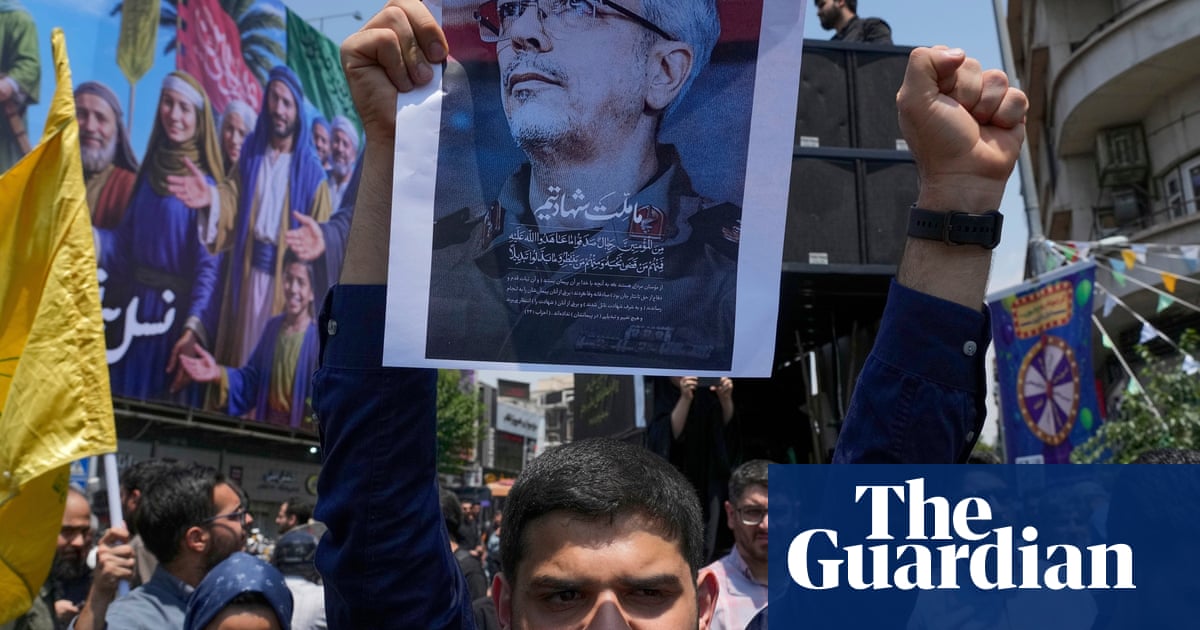More than 200 Israeli jets were involved in air raids on at least 100 targets in Iran in five waves of strikes, including at the key Natanz nuclear site as well as at ballistic missile sites.Israelalso killed at least six senior Iranian nuclear scientists and a number of senior Iranian officials, including its most senior military officer and the head of the Revolutionary Guards.
About a dozen different sites appear to have been attacked, including in Tehran, Tabriz, Isfahan and Kermanshah.
The International Atomic Energy Agency (IAEA) has confirmed strikes at the Natanz nuclear site about 135 miles south east of Tehran, Iran’s most significant nuclear enrichment site, that began at just after 4am local time.
Protected by heavy concrete walls,Natanz’scentrifuge facilities are located underground and the site has been targeted for sabotage operations on multiple locations. Construction work had been under way to expand the site.
Natanz is where Iran has produced much of its nuclear fuel – including a stockpile of highly enriched uranium that the west has suggested could be used in a future nuclear weapon.
It is unclear how much damage was done during the attack, but video footage posted online appeared to show the aftermath of massive explosions. However, on Friday morning the IAEA said their had been no reported nuclear contamination from the Israeli attack.
At the time of writing, the IAEA – quoting Iranian authorities – said a number of other key Iranian sites including theFordownuclear enrichment site, theIsfahannuclear site and theBushehrnuclear power plant had not been hit.
Early reports suggestBid Kaneh,which hosts several missile development and production sites, was also hit on Friday morning.
Iran has confirmed a number of senior military figures and scientists were also assassinated, some in strikes on private residences, pointing to a military operation going far beyond Israel’s stated intention of preventing Tehran crossing the threshold for acquiring a nuclear weapon.
Among those killed were the chief of staff of Iran’s armed forces,Mohammad Bagheri, and the commander of the Islamic Revolutionary Guard Corps (IRGC),Hossein Salami, suggesting a broader “decapitation” strike aimed at weakening the Iranian regime.
The Israeli prime minister,Benjamin Netanyahu, expressed hope the attacks would trigger the downfall of Iran’s theocracy, saying his message to the Iranian people was that Israel’s fight was not with them, but with the “brutal dictatorship that has oppressed you for 46 years”.
Both officers were closely associated with the centres of power in Iran’s security hierarchy having risen through the ranks after the Iranian revolution in 1979.
Salamibegan his career in the IRGC in 1980 duringthe Iran-Iraq war, becoming deputy commander in 2009 then, a decade later, commander of the 125,000-strong force that has played a key role in Iran’s forward foreign policy in the region. Salami had been sanctioned by the UN and US for his involvement in Iran’s nuclear and military programmes.
“If you make the slightest mistake, we will open the gates of hell for you,” Salami warned Tehran’s foes during a tour of an underground missile base in January.
Mohammad Bagheri, who was in his early 60s, had also risen through theIRGC, like Salami fighting in the Iran-Iraq war with a background in military intelligence before being appointed chief of staff of the Armed Forces of the Islamic Republic of Iran – the country’s highest military position – in 2016. His position made him, formally at least, the second most powerful figure in Iran after the Supreme leader, Ayatollah Ali Khamenei.
Some press reports have suggested Bagheri was one of the revolutionary students that seized the US embassy in 1979.Gholamali Rashid, the deputy commander in chief of the armed forces, was also reported as having been killed.
It was also reported thatAli Shamkhani, a key adviser to and confidant of Khamenei, was also killed in a strikes on an apartment block in Tehran.
Israel has a history of targeting Iranian nuclear scientists, and this attack was no exception with at least six scientists being killed on Friday.
The Tasnim news agency named the six scientists includingMohammad Mehdi Tehranchi, who was the president of the Islamic Azad University of Iran, a theoretical physicist and the president of the Islamic Azad University in Tehran.
Also killed wasFereydoun Abbasi, a former head of the Atomic Energy Organization of Iran. Tasnim additionally named Abdolhamid Minouchehr, Ahmadreza Zolfaghari, Amirhossein Feqhi, Motalleblizadeh, as other scientists who were killed.
